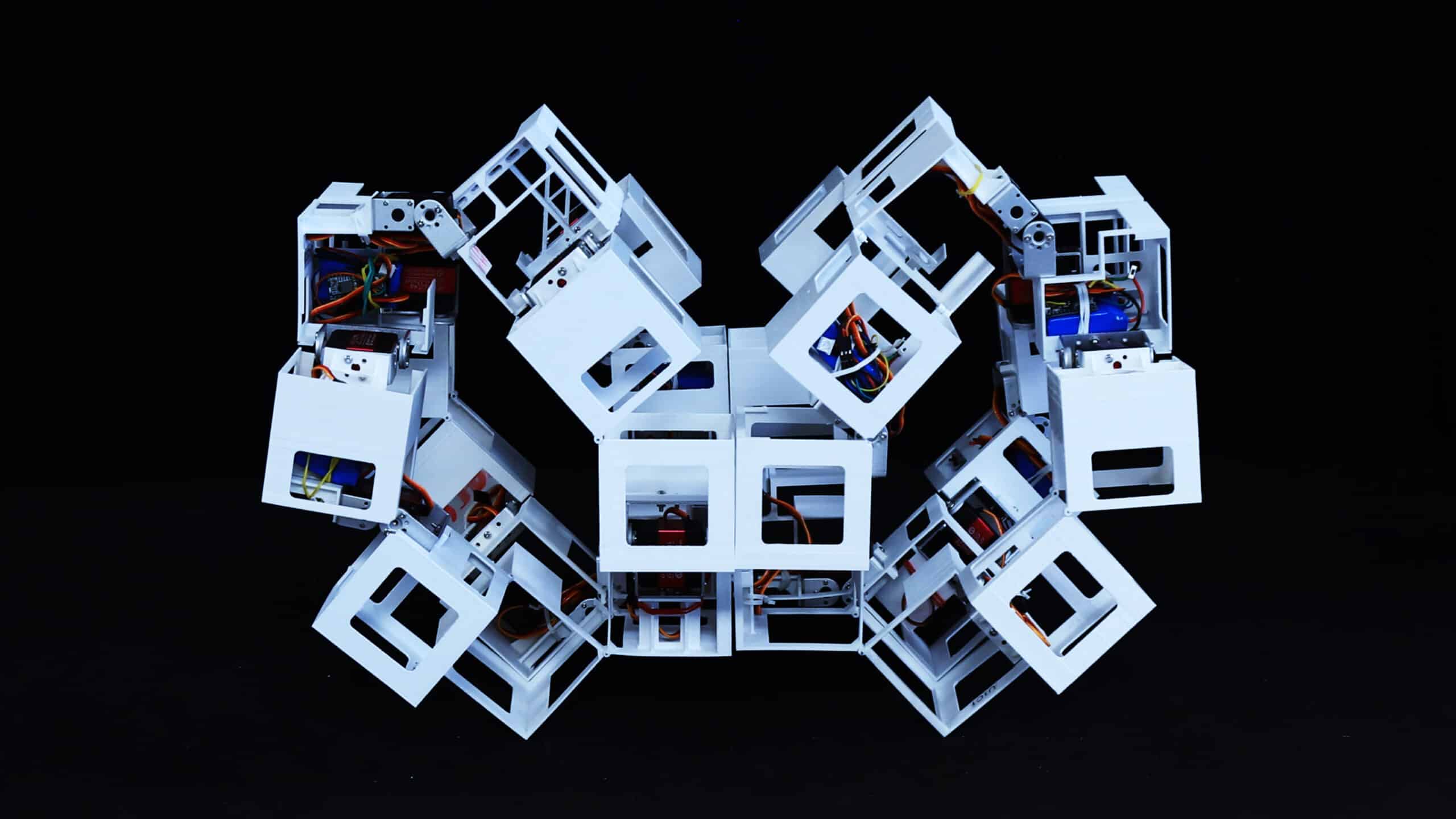What just happened? Engineers at North Carolina State University have created cube-shaped plastic robots that can morph into over a thousand different configurations using just three tiny motors. This origami-inspired breakthrough could lead to a new breed of versatile, shapeshifting machines for space exploration and beyond.
The cubes, which are 3D printed and assembled into a larger structure, are able to dynamically transform into over 1,000 shapes, including tunnel shapes, bridges, and multi-story structures.
"The question we're asking is how to achieve a number of versatile shapes with the fewest number of actuators powering the shapeshifting," said Jie Yin, the mechanical engineering professor who co-authored the research, in a press release. "Here we use a hierarchical concept observed in nature – like layered muscle fibers – but with plastic cubes to create a transforming robot."
The untethered bots are able to shuffle in any direction without legs or wheels simply by altering their structural shape. They can quickly switch from flat, or fully open, to a larger, box-like cube, or become fully closed. The robots can even bear loads up to three times their own weight while shifting around.
The researchers first demonstrated the naked cubic structures in a video that shows off their sheer flexibility, twisting and shapeshifting. They then automated the process by adding motors. The movement happens along hinges. While some of them are fixed, others are motorized and wirelessly controlled.
One of the most intriguing potential applications of this breakthrough is scaling the transforming cubes up in size to create highly versatile structures for space missions.
Antonio Di Lallo, another co-author of the paper, stated that their creation could serve as deployable, configurable space robots and habitats.He said it is modular, so it can be sent to space flat and assembled as a shelter or habitat, and then disassembled.
The team wants to enhance the bots' robustness to handle even greater loads. They may also be exploring car-like shapes that could serve as future transportation in space.
"If we want a car shape, for example, how do we design the first structure that can transform into a car shape? We also want to test our structures with real-world applications like space robots," said Yanbin Li, a co-corresponding author of the paper.
The morphing cube robots point towards an exciting future where machines aren't constrained to rigid shapes. Transforming robots that can dynamically adapt their structural geometry could find countless innovative uses across different industries.
Whether autonomously constructing shelters, inspecting hazardous environments by squeezing through tight spaces, or just providing endlessly reconfigurable tools and assistants, the possibilities seem endless.
